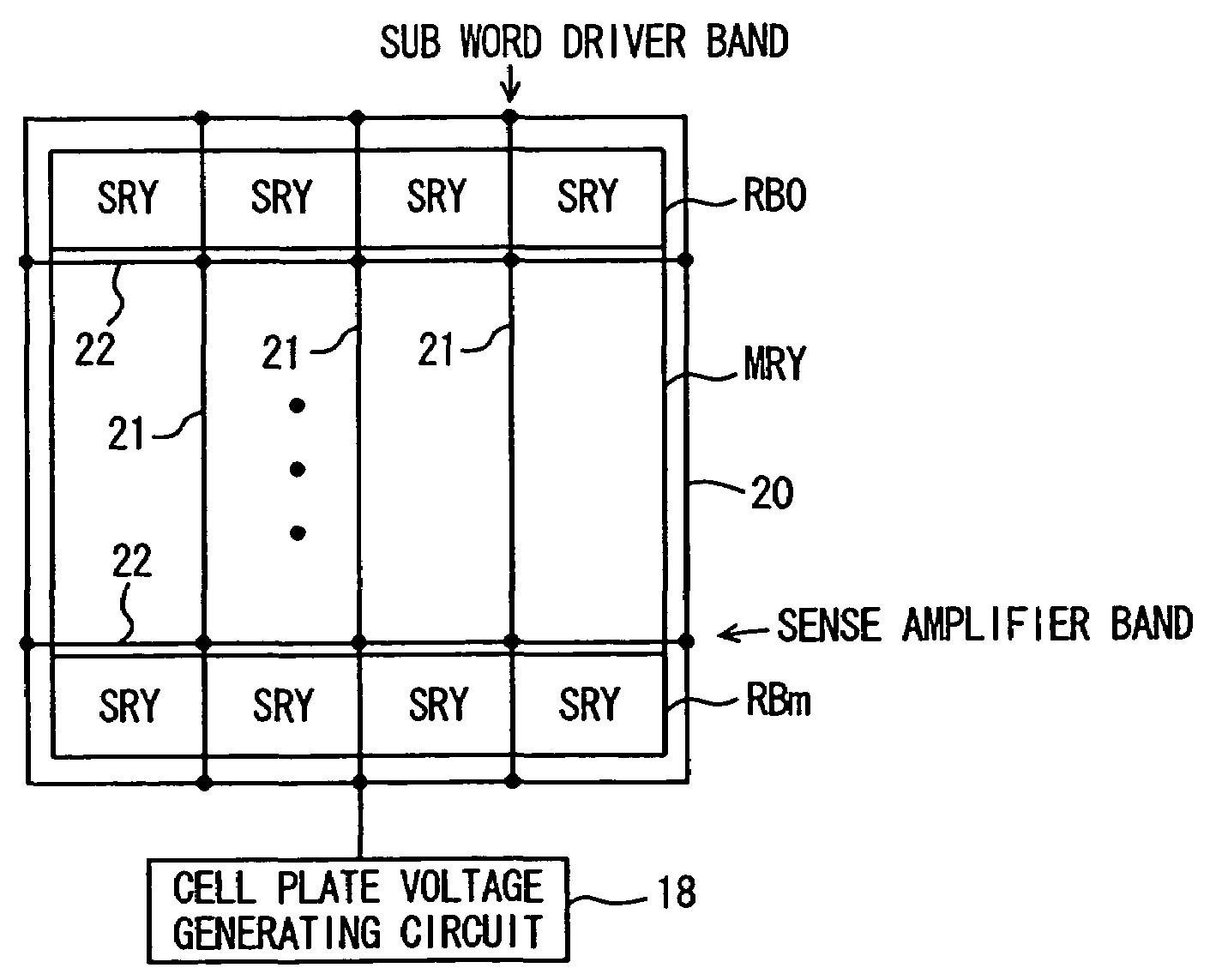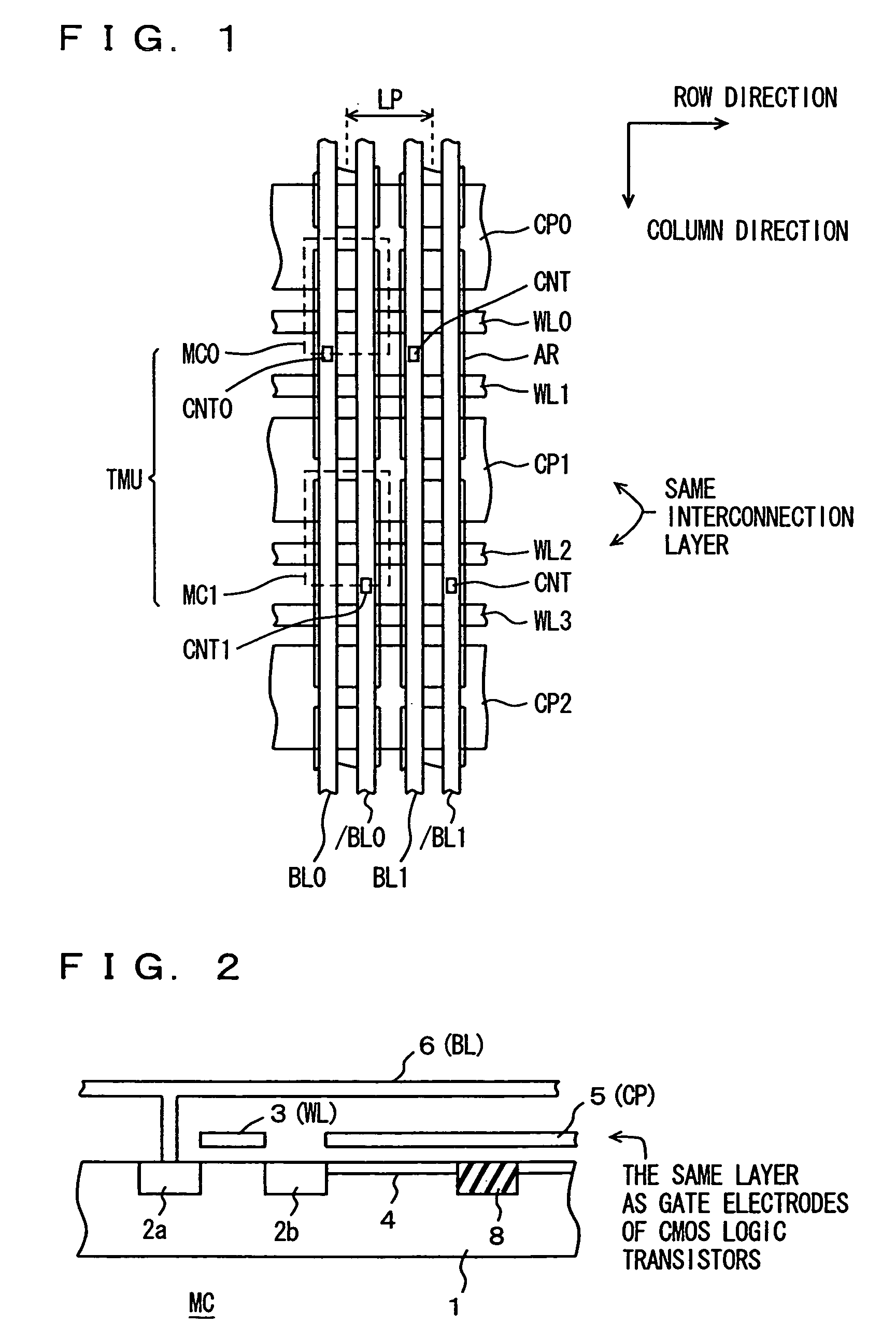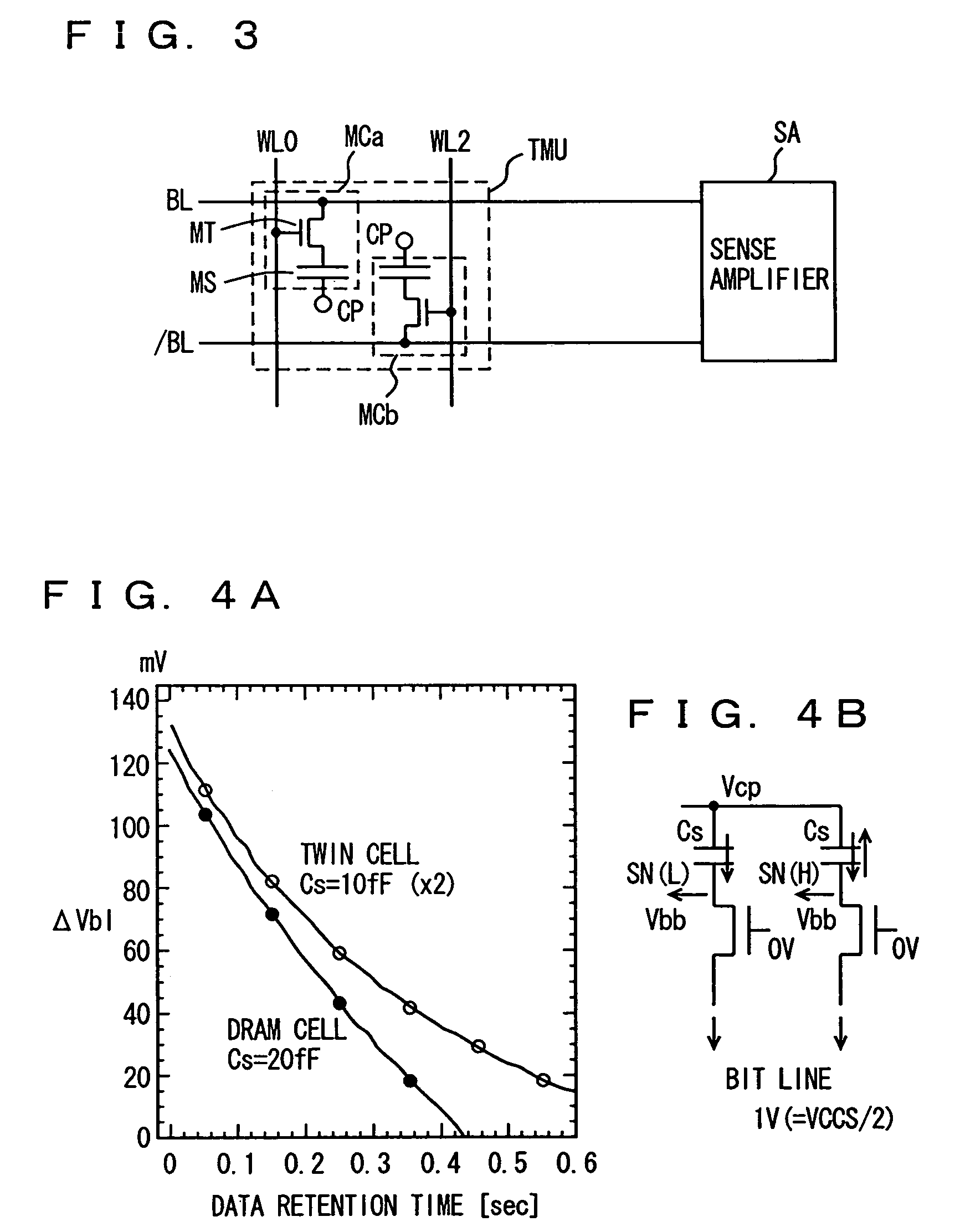Semiconductor memory device with improved data retention characteristics
a memory device and memory technology, applied in semiconductor devices, digital storage, instruments, etc., can solve the problems of increasing chip cost, large chip size, and increasing manufacturing steps, and achieve large memory capacity, small occupancy area, and low cost
- Summary
- Abstract
- Description
- Claims
- Application Information
AI Technical Summary
Benefits of technology
Problems solved by technology
Method used
Image
Examples
first embodiment
[First Embodiment]
[0102]FIG. 1 is a diagram schematically showing the configuration of an array section of a semiconductor memory device according to a first embodiment of the present invention. A layout of memory cells arranged in 4 rows and 2 columns is shown representatively in FIG. 1. In FIG. 1, word lines WL0–WL3 are arranged extending in the row direction. Cell plate electrode lines CP0–CP2 are formed in the same interconnection layer as word lines WL0–WL3 and in parallel to these word lines. Accordingly, cell plate electrode lines CP0–CP2 are arranged such that adjacent cell plate lines sandwich two word lines, and are arranged extending in the row direction in the memory cell array. The cell plate electrode lines adjacent to each other in the column direction are separated from each other by a word line WL arranged in between.
[0103]Word line WL0–WL3 are arranged corresponding to memory cell rows, and are connected to the memory cells in corresponding rows.
[0104]A constant re...
third embodiment
[Third Embodiment]
[0148]FIG. 9 is a diagram schematically showing a layout of a memory array according to a third embodiment of the present invention. The layout of memory cells illustrated in FIG. 9 is the same as the layout of the memory array illustrated in FIG. 7. In the configuration illustrated in FIG. 9, adjacent bit lines do not constitute a bit line pair. A bit line pair is provided by two bit lines with one bit line interposed in between. Upon selection of a word, one of word lines is selected. Therefore, memory cells MC0 and MC3 constitute a twin cell unit TMU, and memory cells MC1 and MC4 constitute another twin cell unit. The other configurations are the same as in FIG. 7. The same reference numerals are allotted to the corresponding components, and detailed explanation thereof is omitted.
[0149]In the configuration as illustrated in FIG. 9, one of the word lines is selected, but two word lines do not need to be selected. Thus, current consumption can be reduced.
[0150]A ...
modification example
[Modification Example]
[0224]FIG. 23 is a diagram schematically showing the configuration of a modification of the third embodiment of the present invention. In FIG. 23, a bank A sense amplifier band SABA is arranged at one side, in the column direction, of a row block RBA, and a bank B sense amplifier SABB is arranged between row blocks RBA and RBB. Memory cells arranged at the crossing of a bit line pair BLPa and a sub word line SWLA in row block RBA are connected to a sense amplifier in bank A sense amplifier band SABA. On the other hand, in row block RBA, data in memory cells arranged corresponding to the crossing of a sub word line SWLB and a bit line pair BLPb are sensed and amplified by bank B sense amplifier band SABB.
[0225]A local control circuit 85 is provided to bank A sense amplifier band SABA, and a local control circuit 86 is provided to bank B sense amplifier band SABB. A latch bank designating signal BSLTA and a latch block selecting signal BSA specifying memory block...
PUM
 Login to View More
Login to View More Abstract
Description
Claims
Application Information
 Login to View More
Login to View More - R&D
- Intellectual Property
- Life Sciences
- Materials
- Tech Scout
- Unparalleled Data Quality
- Higher Quality Content
- 60% Fewer Hallucinations
Browse by: Latest US Patents, China's latest patents, Technical Efficacy Thesaurus, Application Domain, Technology Topic, Popular Technical Reports.
© 2025 PatSnap. All rights reserved.Legal|Privacy policy|Modern Slavery Act Transparency Statement|Sitemap|About US| Contact US: help@patsnap.com



